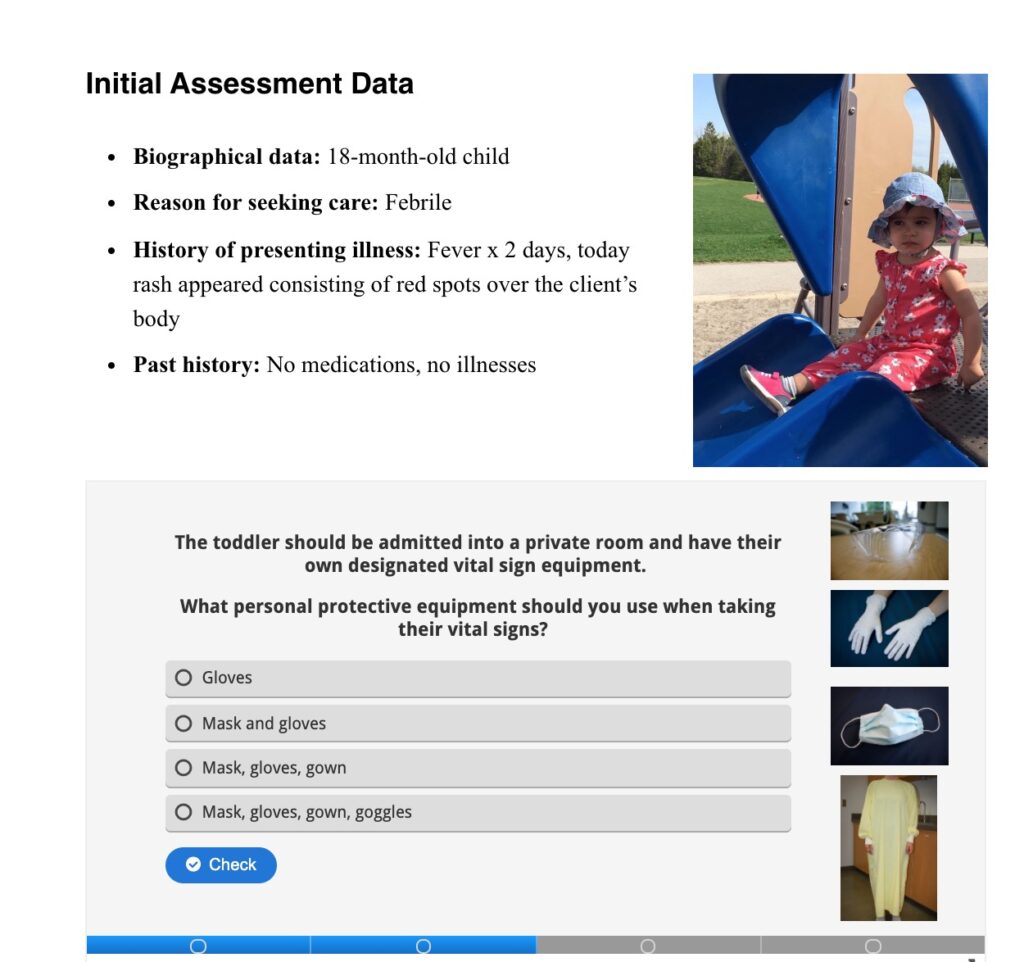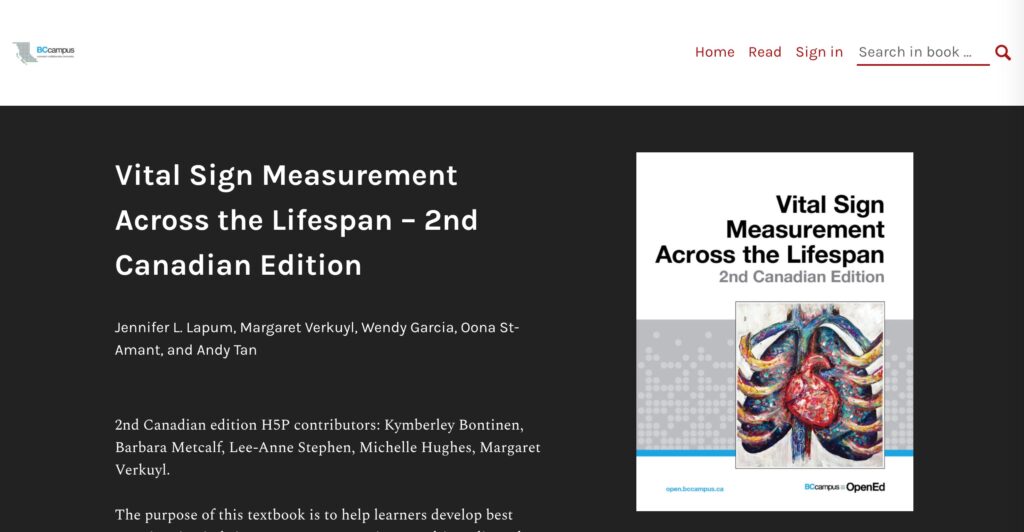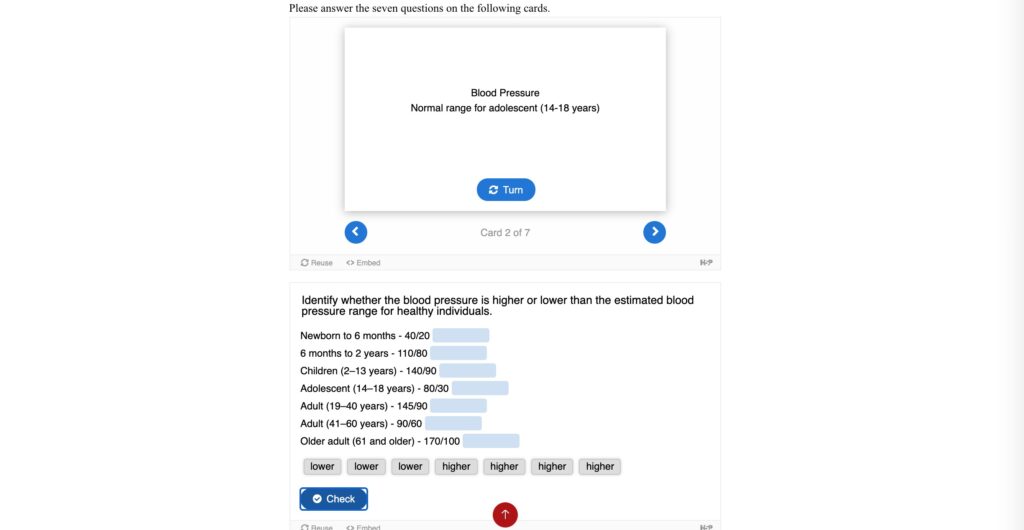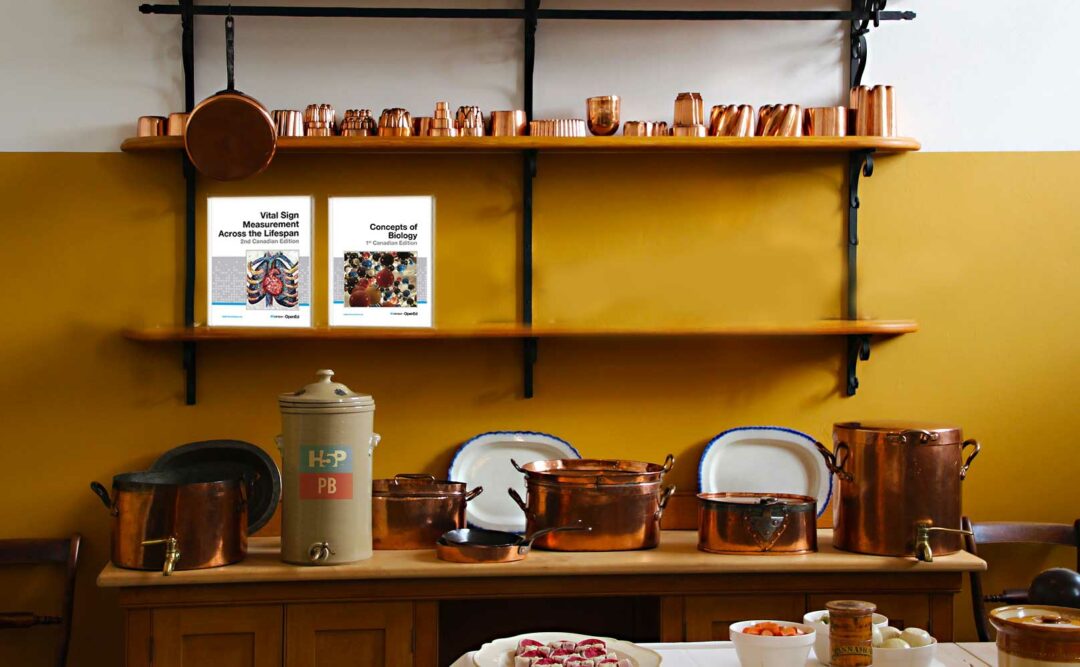We are excited to share the first available H5P “infused” textbook from our first round of projects.
The process here in the H5P/PB kitchen has been to clone an existing one from the BC Campus Open Textbook Collection into a Pressbooks workspace where project team members created and integrated H5P activities into the text. When these versions are done, there is a bit more work than just replacing the original, we have to verify the licensing in all H5P metadata, test functionality, check accessibility, and correlate with possible edits in the original textbook (yes, in the kitchen there can be problems with forks).
We are excited to announce that now available in the BC Campus library for all to use, reuse, remix is a new title of Vital Sign Measurement Across the Lifespan – 2nd Canadian Edition.
The purpose of this textbook is to help learners develop best practices in vital sign measurement. Its intended audience is students in health-related post-secondary programs as well as healthcare providers. Using a multi-media and interactive approach, it will provide opportunities to read about, observe, practice, and test vital sign measurement.
This H5P/PB project says much about the affordances and potential of open licensed textbooks, as it is built upon the first version by Jennifer L. Lapum, Margaret Verkuyl, Wendy Garcia, Oona St-Amant, and Andy Tan published openly by eCampusOntario.
Our team of Kymberley Bontinen, Barbara Metcalf, Lee-Anne Stephen, Michelle Hughes, and Margaret Verkuyl have augmented this textbook with 136 interactive H5P activities aimed at providing in-context practice and reinforcement of the vital sign techniques and concepts behind them.
What’s impressive about these activities is that the team used a good mix of the suggested H5P content types but more so, as you will see below, that in many cases they have developed effective combinations of the tools. Furthermore, the new interactions provide a helpful amount of constructive feedback, beyond simply correct/incorrect responses.
Exploring the New Vital Signs Textbook

We have a few suggestions for you.
- Open the book! Explore the Vital Sign Measurement Across the Lifespan directly from BCcampus Open Textbook collection.
- See the H5P Catalog. View a listing of all H5P content in the Vital Signs textbook. One of the many features of Pressbooks is that it offers a special link to see all of the H5P content items in it’s library and view them a standalone items. This link leads to a single listing of all 136 H5P content, but not in the context of where they are used in the book.
- View by chapters with H5P. Doing a search on “H5P” will provide links to all chapters in the Vital Signs textbook that contain at least one interactive activity. This is how you can view the H5P in the context of the content where they provide practice exercises.
A Few Servings to Sample
We are setting out here a sample tray of a few of the ways the Vital Signs team enhanced the textbook with practice activities.
The Vital Sign Measurements book makes good use of case study examples. In the first version, the attributes of the cases were described in text, and the exercises were often questions suggested for the students to respond to or practice on outside of the textbook.
For example, in version 1 for Case Study 2 of a Pediatric Patient, initial assessment data was presented. Then questions were presented with instructions “Think about the client data and try to answer the following questions. Write your answers on a piece of paper.” The answers were presented on the following page.
Now in version 2, images are added to represent the client, but more importantly, multiple choice questions are embedded in context using the Course Presentation content type.

In the previous version the vital signs record practice required a print out of a PDF for student to mark up, and compare to an answered version on the following page. Followup questions again were outlined on one page, with an answer key on the next.
Now the blank and correctly filled out records sheet are shown in one interface using the Image Juxtaposition content type. The practice is provided again in another Course Presentation containing within it exercises using Mark the Words, Drag the Words, and Dialog Cards.
In many places in the new Vital Signs Measurement book, we find effective combination of H5P content types. For example, in the Test Your Knowledge section for the chapter on Blood Pressure Ranges, a series of dialog cards is used for learners to practice answering to themselves the correct ranges of measurement. This is immediately followed by a Drag the Words where from 6 examples of collected blood pressure from different aged clients, you have to identify by Drag the Words if the measurement is higher or lower than normal.
And in the conclusion, what existed in the first edition as a printable series of flash cards, the new version features a interactive video demonstrating measurements, with stop points that explain the process.

There is quite a bit more to see, so explore the Vital Sign Measurement Across the Lifespan – 2nd Canadian Edition and taste for yourself the 136 H5P activities added to this version.
Congratulations to our chefs Kymberley Bontinen, Barbara Metcalf, Lee-Anne Stephen, Michelle Hughes, and Margaret Verkuyl for making this our first H5P flavored open textbook on our shelf.
Look for more to be added soon.
Featured Image: Pixabay photo by Dean Moriarty modified by Alan Levine to be cropped, an H5P/PB logo slipped in, and a shelf cleared to include cover of the Vital Signs Measurement new textbook. This remix is licensed Creative Commons CC-BY






